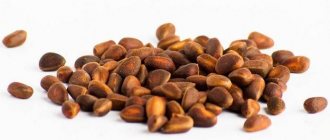The question for those involved in strength sports, especially those trying to gain muscle mass, is far from idle. We all know that to build new muscle structures it is necessary to supply the body with building material. Due to the fact that muscles are made of proteins, it is quite logical that proteins are this building material. All that remains is to load yourself with more protein material, but... then someone said that more than 30 grams of protein cannot be absorbed at a time! And how to be here? Goodbye mass gain? Or maybe the solution is to eat more often, say, every hour? Then you can score more of these 30s in a day!
But here another question arises: can eating every hour be considered a separate meal?
And there is another question, do guys who weigh 100 or 120 kilograms also have a norm of 30 grams per meal? Or is their standard more, say, 50 grams?
“Good” questions, to which, like you, your humble servant, I have not seen any substantiated answers in reliable sources, such as, say, physiology textbooks. Articles or videos on this topic usually contain some kind of logic, which is often quite justified, but until now I have not found any serious data. Yes, there are, for example, recommended portions from sports nutrition manufacturers regarding protein drinks, where a measuring scoop of whey or casein confirms just such norms of the order of 30-35 grams with a total protein of 22-25 grams. But, let's agree, this is all indirect evidence.
And now your humble servant came across one interesting study that can help answer questions about the amount of digestible protein. The purpose of this study was not really to directly examine protein intake. People set out to determine whether it was possible to replace the optimal dose of post-workout protein (according to numerous studies, this is 20-25 grams of protein) with an alternative option of a lower dose, but enhanced with the main anabolic amino acid – Leucine. As part of this study, a wide range of indicators of absorption, transport, stimulation and synthesis of amino acids was taken. And although scientists have studied other aspects, indicators of protein absorption both at the level of the gastrointestinal tract and at the level of utilization by the muscle cell have specific numbers and will help to form a certain picture about the transport capacity of the body in general and the gastrointestinal tract in particular for the absorption of proteins.
Simple logic
The body's ability to absorb protein varies from person to person primarily due to varying amounts of muscle mass. The protein needs of a 70kg athlete will be significantly different from those of a 100kg athlete, and that's obvious.
Additionally, Aragon gives a simple example:
“Let’s imagine two people weighing 90 kg who consume 150 grams of protein per day. In this case, the first of them consumes 150 g of protein, distributing it evenly over 5 meals, that is, 30 g at a time. The second person consumes the same 150 g of protein, but in one meal.
If our body were able to absorb no more than 30 g of protein at a time, in this case the second person would experience a protein deficiency, because out of 150 g his body would absorb a maximum of 30 g of protein. Under such conditions, he would consume only 0.33 g of protein per 1 kg of body weight per day, which is only a third of the recommended allowance (RDA).”
By the way, for recommendations on protein consumption, see the text “Protein Guide.”
However, the human body is a very smart system that people underestimate. Our body always takes its toll and can digest quite a large amount of food. Otherwise, the human species would have disappeared long ago. In the example above, the first person will have shorter digestive periods during which their body will digest and absorb the protein. The second person, due to the volume of the protein portion, will have a longer period of digestion and absorption.
As Aragon notes, despite the above arguments, logical conclusions alone do not make it possible to come to a clear conclusion. Let's turn to scientific data.
It is not necessary to distribute the proteins evenly throughout the day. A reasonable approach is enough: just eat enough of them per day and without fanaticism with scales and watches.
Protein Digestibility Ratio
There are various variables that can affect the process of protein absorption in the body. Some of them are the most important.
Many people are familiar with fast-acting proteins, among them hydrolyzed whey protein. There is also a slow-acting protein called casein.
Hydrolyzed whey protein contains short peptides because the process is already hydrolyzed during production. Casein forms a mass, being in the stomach, it is digested for some time. The body may be able to digest some types of protein much more easily, while others may be less able to process them. Studies have shown that more amino acids are transported in the digestive system without the absorption of soy protein, compared to the same proportion of whey. There are also other nutrients that enter our body through solid foods. They are also capable of influencing absorption. If you consume viscous liquids (for example, a protein shake) on an empty stomach, it takes an average of an hour and a half to digest. During this time, the product manages to reach the end of the small intestine. If protein is consumed in the form of solid food, the absorption time may be increased. You should know that single amino acids, which are produced during the breakdown of protein, compete with sugar monosaccharides in absorption.
| Power supply | Protein digestibility(%) |
| Eggs | 97 |
| Milk and cheese | 97 |
| Mixed Diet Proteins | 96 |
| Meat and fish | 94 |
| Cereals | 86 |
| Soybeans | 78 |
| Rice | 76 |
If the digestive system has low stomach acidity, which is caused by the use of antacids, then this can slow down the digestive process and affect its effectiveness. Acid is very important in the digestion process.
Short term studies
Most advocates of consuming 20 grams of protein per meal argue that this is the amount of protein that provides the maximum anabolic effect. These people refer to data from an experiment by scientists Moore and Robinson, during which it was determined that consuming 40 g of protein did not cause a greater anabolic response than 20 g. However, the anabolic effect was studied only for 4 hours after consuming protein . In their conclusion, the experts stated:
“...we hypothesize that consuming 20 grams of protein at a frequency of 5-6 times per day will achieve maximum muscle protein synthesis.”
Scientists Moore and Robinson imply that 100-120 g of protein per day is the limit that will allow you to grow muscles to the limit of human capabilities. However, numerous studies indicate that each person needs to consume the daily amount of protein that will be adequate to his goals, the needs of the body and the type of physical activity. After all, as mentioned above, the protein needs of a bodybuilder weighing 70 kg and his colleague weighing 100 kg will be significantly different.
In another study, researchers from the University of Connecticut compared how the body responded to moderate (30 g) and large servings of protein (90 g) for 5 hours after eating. As a result, a 90-gram serving of protein did not produce a higher spike in protein synthesis than a 30-gram serving. Regardless of the amount of protein consumed, muscle protein synthesis increased by 50%.
How much protein is absorbed?
Researchers who tested the effects of milk protein had the same idea. Subsequently, they developed and published studies in which they compared the digestibility and costs of the human body of protein varieties that were derivatives of the above-mentioned organic substances. The primary goal of the experiments was to establish the leucine balance after the participants completed their consumption of different types of milk protein.
Leucine is a branched chain amino acid. Scientists administered it by injection, and did not forget to label it with radioactive isotopes in order to accurately monitor its effect on the human body.
The study involved 22 people; during the experiment, they were divided into four groups in order to study the rate of protein absorption. Each group took one of the following drugs:
- A certain amount of casein per person.
- One dose of free amino acids, which were supposed to simulate the composition of casein.
- A certain amount of whey protein (also per person).
- Whey protein in several doses, taken alternately, to simulate a slow-absorbing protein.
Each food composition contained about thirty grams of protein, and the sequential dosage contained thirteen servings, which were given every twenty minutes. In total, the duration of this period was 4 hours. However, in this case, the total volume of protein was thirty grams, as well as in other meals.
As expected, sources of high molecular weight organic matter - protein, which was instantly absorbed, caused an increase in the amount of amino acids, and also caused effective oxidation. However, when whey protein was consumed in multiple doses over time, thereby mimicking the rapid absorption of casein, it caused a decrease in protein breakdown. In other words, it had an anti-catabolic effect. This experiment confirmed that rapidly absorbed proteins cause a significant increase in their synthesis, which does not occur when consuming slowly absorbed proteins.
Significant levels of synthesis are not possible without increasing amino acids. This result can be achieved by eating quickly digestible proteins. However, instant absorption also causes instant oxidation of amino acids. This explains the fact that literally in half an hour everything leaves the human body.
As we can see, the rate of protein absorption is very different.
Long-term studies
As mentioned above, our body is a very smart, and most importantly, economical system that can digest large amounts of food.
In a 2-week study (Arnaletal), there was no difference in lean mass or nitrogen retention (nitrogen balance is what determines whether we gain or lose muscle) between subjects who ate about 80% of their daily protein needs (average 54 grams). per day, the study was conducted on women with an average lean body mass of 40.8 kg) per meal and those who divided the same amount of protein into 4 meals .
Considering that most training men have significantly more muscle mass than the women who took part in the experiment, it is likely that our body is able to digest more than 54 grams of protein per meal and use it to build muscle.
If the same 1.67 g of protein per 1 kg of body weight is applied to an adult male, we will get about 95 or more grams of protein, which is 3 times higher than the upper limit of protein intake of 30 grams, which is said by those who do not understand the issue of fitness. enthusiasts.
Whey Protein Absorption
The experiment described above provides clear evidence that it is possible to achieve casein-like effects by taking whey protein in frequent and consistent doses. Note that the amino acids of slowly digestible protein oxidize within half an hour, so the most rational plan would be to consume it every two hours.
Maintaining a favorable nitrogen balance is an integral component in the process of building muscle fibers.
And this effect can be achieved only with the help of frequent dosages of protein with breaks of no more than 2-3 hours, or by using special protein supplements with casein. This is something to consider if you don't have much time to eat small portions of protein-rich foods frequently. There are many types of such supplements, rich not only in protein, but also in vitamins, which is important for the growth of muscle fibers and maintaining health in general.
Illustrative study
Scientists at the Beltsville Research Center conducted an interesting experiment using the tactics of intermittent fasting (Intermittentfasting):
During the 8-week experiment, the subjects were divided into 2 groups. The first group abstained from eating completely for 18 hours a day and consumed 86 grams of protein only within a 4-hour window. The second group distributed the same amount of protein over 3 meals evenly throughout the day. As a result, the first group experienced significant improvements in body composition (including an increase in lean muscle mass), while the second group did not experience statistically significant improvements.
Data from long-term studies indicate that our body is able to digest and use much more protein for muscle building than the 30 grams received in one meal . There is a scientific explanation for this, which is hidden in the peculiarities of the physiology of digestion.
What promotes protein absorption?
Proteins differ in how quickly they are absorbed by the body. Whey protein is the fastest digestible protein. Eight to ten grams of amino acids can be absorbed from this product per hour. In second place are eggs - from them the body can absorb 1.3-1-4 grams of amino acids within one hour. Our body compensates by slowing down the rate of movement through the digestive tract to give more time for the body to use all the protein as a nutritional element. This effect can be achieved if there are proteins in the diet, or if you add a filler in the form of fiber. You can also take supplements such as enzymes. Digestive enzymes and acid optimize protein breakdown. There are companies whose products have added proteolytic enzymes that help protein digestion. You can also provide yourself with antacids to increase the efficiency of protein breakdown. They are medications that are intended to treat gastrointestinal diseases associated with acid dependence. If you combine fast-digesting proteins with slow-digesting proteins, you can guarantee prolonged protein digestion and absorption.
Antacids are medications that help increase the efficiency of protein breakdown and are intended to treat diseases of the gastrointestinal tract.
Brief physiology of digestion from Examine.com researchers
The food we consume loses its original appearance in the acid bath known as the stomach and turns into a homogeneous mass - chyme. Next, the chyme moves through the small intestine using peristalsis (contraction of the digestive organs to move food along the digestive tract) and is absorbed by its walls. This is the assimilation of food.
Protein Digestion
When we consume protein, it goes through a stage of digestion in the stomach, where it is broken down into amino acids and peptides. These substances are then absorbed by the intestines and, with the participation of transporters, enter the blood. It is the transporters that are the limiting factor in the rate of protein absorption. These substances are only able to deliver protein to the muscles at a limited rate.
At the same time, as the manager of Examine.com, Spencer Nadolsky, notes, our body has no limit on the amount of protein absorption consumed in one meal, because depending on its needs, it can regulate the speed of digestion. This is explained by the ability of amino acids and some peptides to independently regulate the time they spend in the intestines. An example of such peptides is the digestive hormone cholecystokinin, which can slow intestinal motility and reduce the rate of protein absorption.
The hormone cholecystokinin is released in the presence of protein and can slow down digestive processes in order to absorb all the protein consumed in food.
How does the process of protein absorption occur?
During the digestion process, proteins are broken down into smaller chains of amino acids. These chains have different lengths. There are single amino acids, which are called peptides, double (dipeptides) and triple (tripeptides). Only 5% of the proteins entering the digestive system are excreted in feces.
The process of absorption of amino acids through the walls of the large intestine is carried out with the participation of special carrier structures. Each of these transporters transports a specific amino acid into the bloodstream. Some are capable of carrying several different types of amino acids.
Thus, if a person prefers food rich in one type of amino acid, then the transporter that transports it will be overloaded and will not be able to participate in the transport of other types of amino acids. From this it becomes clear that if too much of one type of amino acid enters the body, then a shortage of other amino acids occurs.
Protein is a food supplement that is high in protein and almost completely free of fat and carbohydrates. It is used to build muscle mass, as well as to maintain it during exercise.
In addition to transporters that transport single amino acids, there are transporters that transport di- and tripeptides into the bloodstream. Chains of more than four amino acids cannot be absorbed directly through the intestinal wall and must be broken down into smaller components. The biochemistry of the absorption of proteins and their transport into the bloodstream is important for assessing the effectiveness of a number of nutritional supplements. The first of these are the heavily promoted "oral peptide hormones" (GH or IGF-1). Because the amino acid chains of peptide hormones are much longer than four-amino acid compounds, when taken orally, there is simply no mechanism for these peptide hormones to enter the bloodstream in an active form. This raises the question: do the composition and effectiveness of these supplements correspond to the truth? The answer is most likely not.
Enzymes that break down protein can easily do the same with orally taken peptide hormones, breaking them down into smaller amino acid chains, which will do the same thing as with dietary proteins.
Simply put, it is not for nothing that GH, IGF-1 and insulin are administered by injection - after all, in the stomach they are broken down into short peptide chains, losing all their properties and effects of hormones. The same applies to endocrine drugs. For those who were not involved in bodybuilding in the distant 80s, let us explain: dried extracts from the endocrine glands were called endocrine drugs. It was assumed that they would help improve the functioning of similar glands of a person taking such a drug. Those. The thyroid drug contained desiccated thyroid gland (which, like most body tissues, is made of protein), and its use was supposed to help improve the patient's thyroid function. A similar drug for improving the function of the gonads contained ground testicular tissue. It was believed that taking this drug had a beneficial effect on male performance and the level of male sex hormones. But, being a large protein molecule, any endocrine drug will be broken down in the stomach into simpler short chains of amino acids, and its effect on the body will be similar to the effect of any ordinary food protein, which makes any claims about the wonderful properties of endocrine drugs absurd.
Conclusion:
As researchers from Examine.com note, there is a limit to the rate at which our bodies can absorb protein. However, if you eat more than it can absorb in a single period of time, the speed of digestive processes will decrease and the protein remaining in the small intestine will certainly be absorbed, albeit over a longer period of time.
Alan Aragon, in the conclusion of his material, emphasizes that if there is a limit to the amount of protein that our body is able to absorb at one time, then most likely it is equal to the total daily amount of protein that the body needs to cover all needs, including muscle building.
Scientific sources:
o A. Aragon, Is there a limit to how much protein the body can use in a single meal, wannabebig.com
o How much protein can I eat in one sitting, Examine.com
o Limit protein to 20g per meal, Precision Nutrition
o Liddle R., Cholecystokinin cells, Annu Rev Physiol. 1997;59:221-42
o Peristalsis, US National Library of Medicine.
Time to consume different proteins
As you understand, the absorption time of whey protein differs from casein protein, so let’s figure out when it is better to take which one to achieve maximum effectiveness:
- On busy work or school days without lunch, it is better to drink a casein shake in the morning, and a one-time dose of whey protein will not give you good results. Casein will slowly release amino acids into the blood, supporting anabolism.
- Before going to bed, it is also better to drink casein, the rate of absorption of which is quite slow. It will support muscle fibers until you wake up.
- Post-workout, pump amino acids into your muscles with a whey protein shake. A powerful and short-term amino acid release will come in handy.
- If you are involved in bodybuilding and have a free lifestyle, consume whey protein regularly. To do this, divide your daily protein intake into small doses. The maximum period should be no more than three hours.
- Knowing that you won't be able to eat for a long time, drink casein, which will saturate your body for a long time.
sportzal.com/post/1621/ food4strong.com/blog/usvoyaemost-proteina tutknow.ru/sportivnoe-pitanie/1890-skorost-usvoeniya-proteinov.html
How much protein is in different foods?
To get 31 g of protein you need to eat 100 g of caviar or 150 g of beans or drink 1 liter of milk. To obtain 37 g of protein, you will need 200 g of cottage cheese (low-fat) or 150 g of cheese. For an ordinary person who is concerned about his health, he should consume 0.5 - 1 g of protein per kg of weight per day. And for those who want to build muscle mass, the figure should be increased to 2-3 g/kg body weight. Some people have difficulty digesting milk products due to the absence or insufficient amount of the lactase enzyme. But it breaks down milk carbohydrates, not proteins. Therefore, the roots of this problem clearly do not grow from here.
Effects of protein on the liver and kidneys
People unfamiliar with sports nutrition mistakenly believe that taking protein powder is the same as using anabolic steroids. Some even claim that such protein is dangerous for the kidneys and liver.
The only substantiated proof of this could be the 1973 experiment, but it is impossible to recognize it as correct. It consisted in the fact that mice starved for five days were given large doses of protein, which led to an increase in toxins in the blood and negatively affected the functioning of the kidneys.
How to use sports protein correctly?
Athletes involved in physical training who use a protein supplement to increase muscle mass are recommended to drink protein before the start of training or during the “carbohydrate window” period that occurs immediately after the end of training. The standard rate is from twenty to thirty grams.
Sports protein is indicated for use not only for those who want to gain additional muscle, but also when the usual diet does not provide the body with a sufficient amount of protein (1.5 grams per kilogram of a person’s weight). This appetite suppressant supplement is recommended for use by people trying to lose weight and reduce body fat.
Initial phases of protein digestion
Before delving into the amount of protein and other tangible indicators, it is worth remembering, at least in the most general terms, how exactly protein is absorbed by the human body. Considering that the true extent of this process is worthy of an academic cycle, we will still try to take this course as an external student and find out how it happens.
Protein is a protein, it is a building material without which any cell, tissue and organ of our body cannot do. It is found in large quantities in seafood, meat, eggs, fish, cottage cheese, and dairy products.
You probably already know that the digestive process begins in the mouth, where food is physically broken down. After your incisors and molars have done their dirty work, the crushed food/nutrients (in our case, protein) are sent to the stomach, where the digestion process begins.
The epithelium of the stomach produces gastric juice, which consists of hydrochloric acid, sodium chloride and potassium chloride. These acids initiate the chemical breakdown (denaturation) of protein molecules and activate digestive enzymes necessary for further digestion.
One of the key proteolytic enzymes is pepsin. For people who eat a lot of protein foods, naturopaths recommend taking this enzyme in addition, but the value of such advice can be questioned.
Refutation of the 30 gram absorption theory
Almost all famous professional bodybuilders completely ignore this theory. They eat from 60-100 grams per meal, the results of their ideal body can be assessed with the naked eye. To consume large amounts of protein, you cannot do without sports protein supplements.
This is a protein powder that helps add the missing amount to your main food. They also have their own specific advantages in absorption. The most popular are milk (slow) and whey proteins (fast).
Sources
Protein is present in meat, fish, eggs, cottage cheese. You can also use sports nutrition, suitable protein or gainer, which contains up to 30 g of protein. Some essential amino acids are obtained from a supplement such as BCAAs.
Without enough amino acids, muscle growth will be limited because there will be nothing for the fibers to build from. Therefore, so that training to gain muscle mass is not considered in vain, it is important to ensure that there is enough protein in the body.
How much protein you need to eat per day also depends on your gender. The norms for men and women are different. Some girls are afraid to consume enough of this component, reducing the amount of protein foods.











